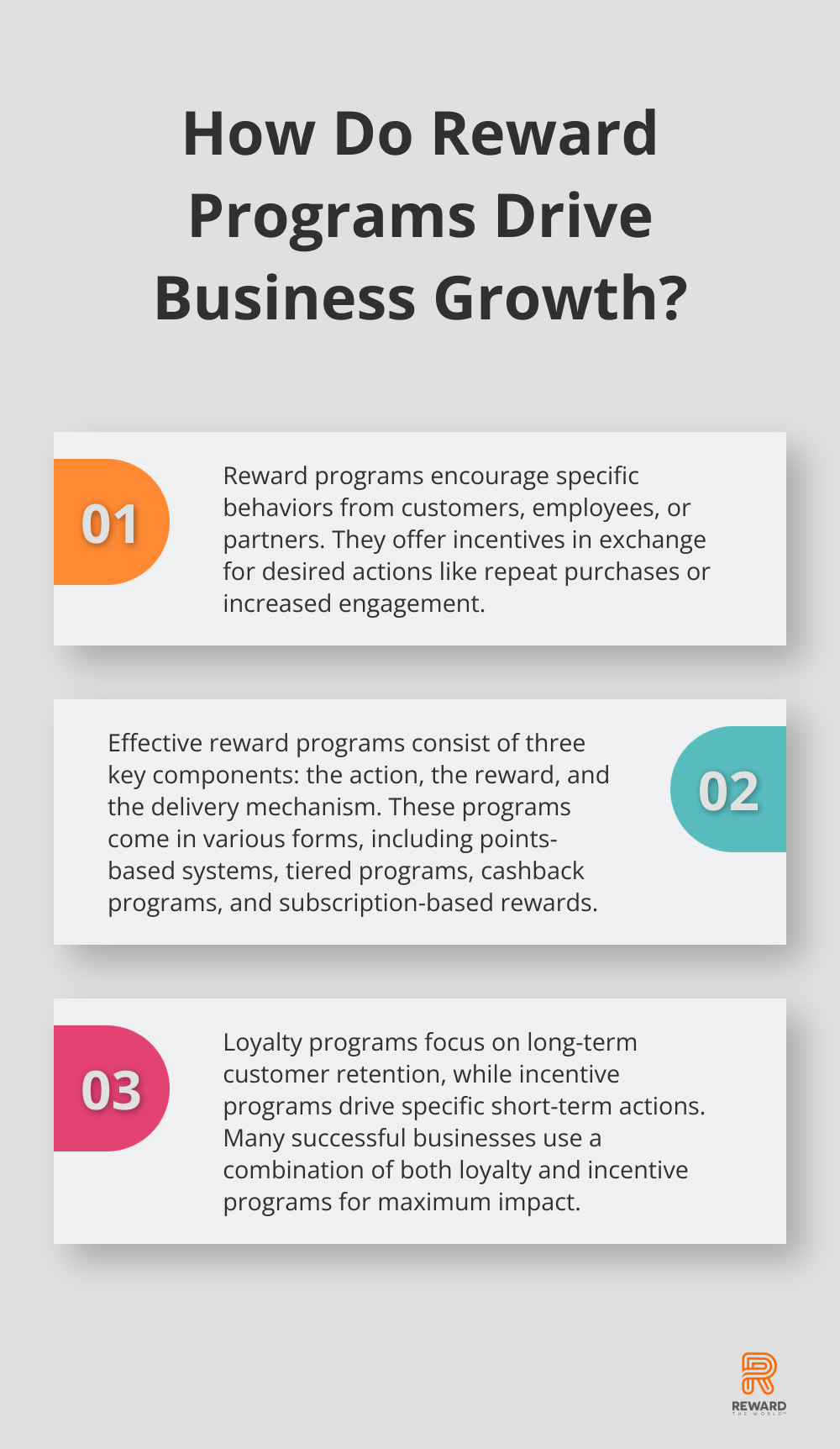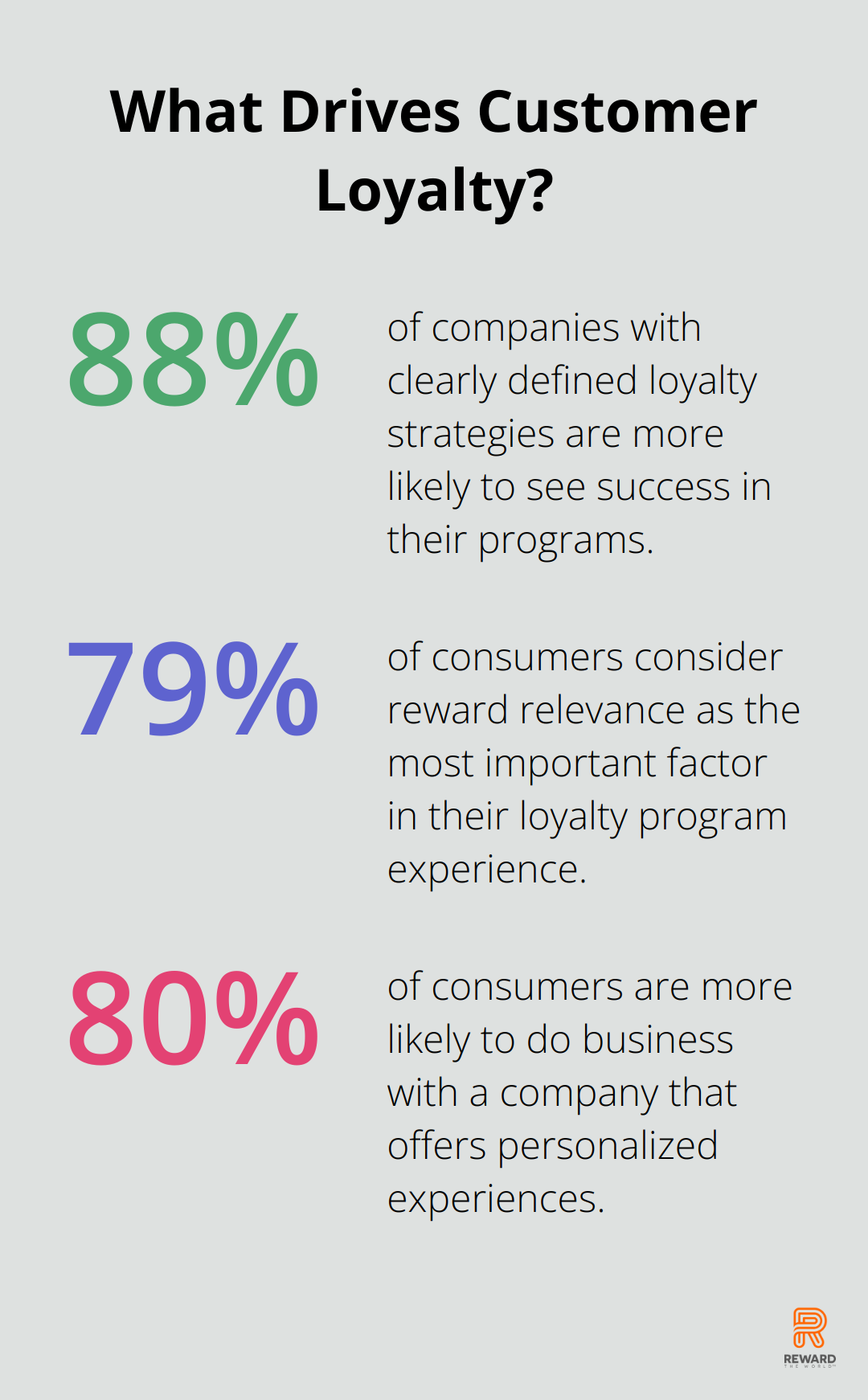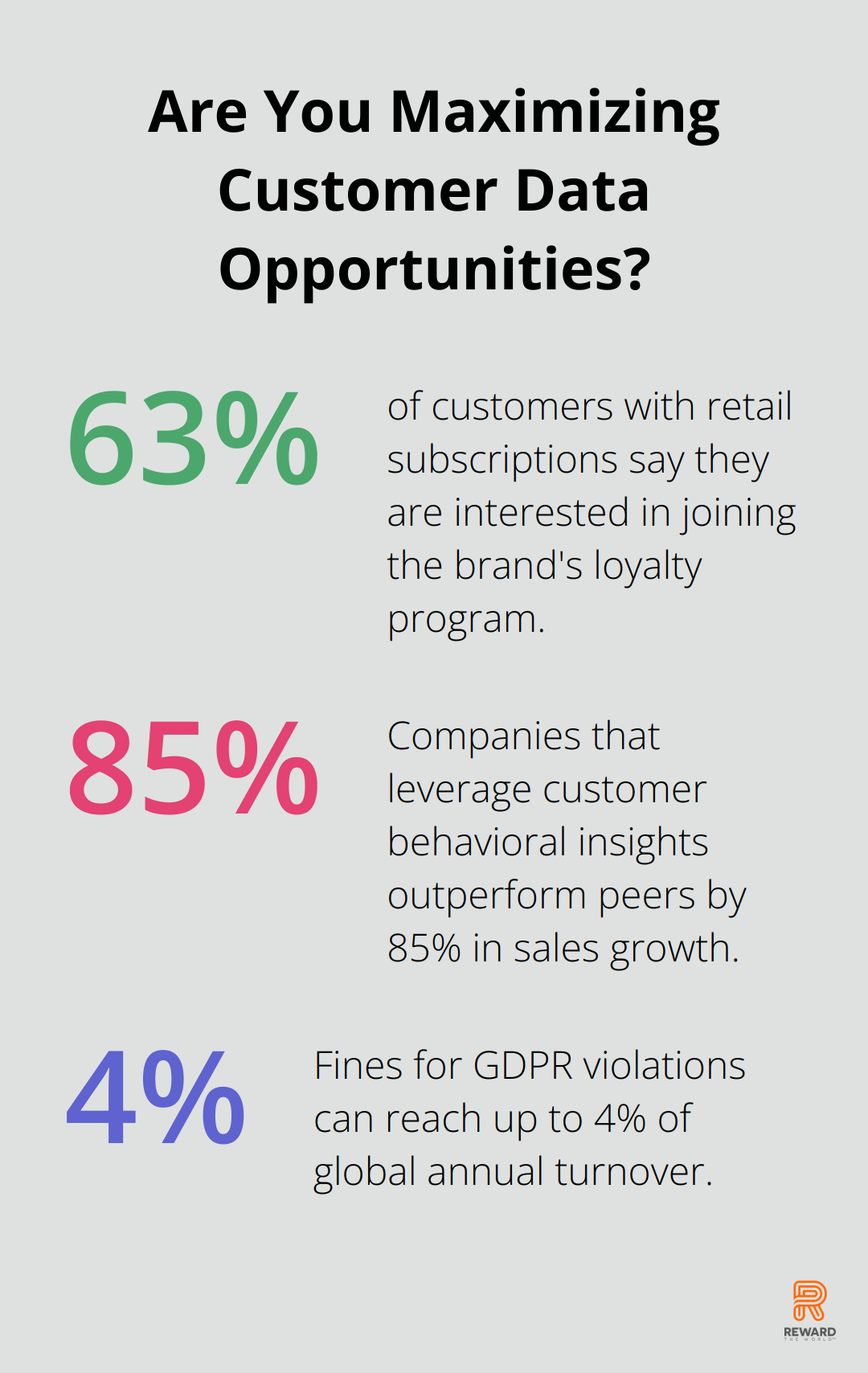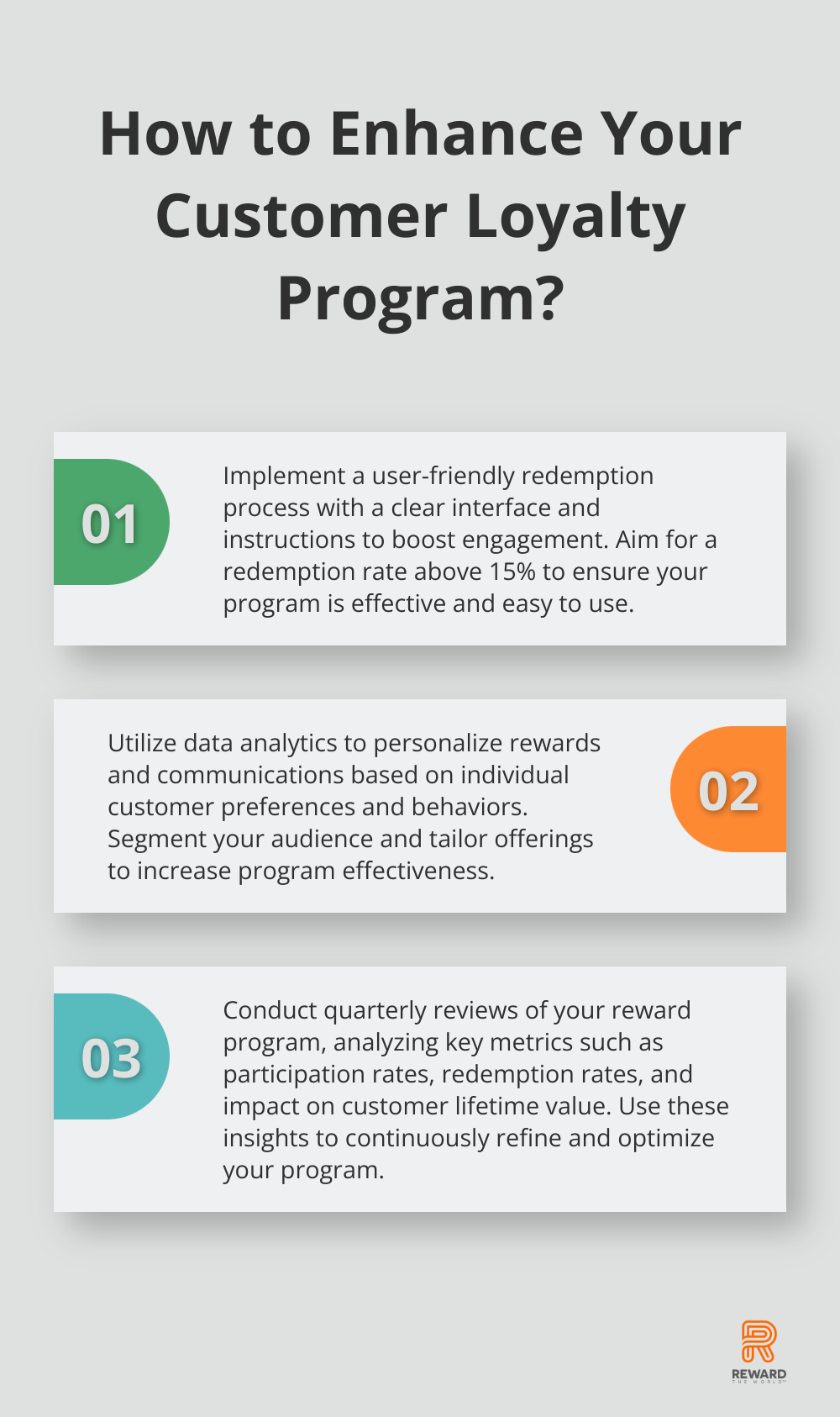
Reward programs are a powerful tool for businesses to drive customer loyalty and engagement. At Reward the World, we’ve seen firsthand how these programs can transform customer relationships and boost bottom lines.
But what exactly is a reward program? This comprehensive guide will explore the definition of reward programs, their key elements, and best practices for implementation.
What Are Reward Programs?
Defining Reward Programs
Reward programs are strategic initiatives that businesses use to encourage specific behaviors from customers, employees, or partners. These programs offer incentives in exchange for desired actions, such as repeat purchases, increased engagement, or improved performance.
The Anatomy of Reward Programs
Effective reward programs consist of three key components:
- The action: What you want participants to do (e.g., making a purchase or referring a friend)
- The reward: The incentive offered (ranging from points to discounts or exclusive experiences)
- The delivery mechanism: How participants receive their rewards (through an app, email, or physical card)
Types of Reward Programs
Reward programs come in various forms to suit different business needs:
- Points-based systems: Participants earn points for actions, which they can redeem for rewards.
- Tiered programs: Rewards increase in value as participants reach higher levels of engagement.
- Cashback programs: Customers receive a percentage of their spending back as a reward.
- Subscription-based rewards: Members pay a fee for exclusive benefits and discounts.
A study by Bond Brand Loyalty revealed key insights and direction for brands seeking customer growth from loyalty and engagement programs. This highlights the importance of selecting the right type of program for your audience.
Loyalty vs. Incentive Programs
While often used interchangeably, loyalty and incentive programs have distinct characteristics:
- Loyalty programs focus on long-term customer retention and relationship building. They typically offer ongoing rewards for continued patronage (e.g., a coffee shop offering a free drink after every ten purchases).
- Incentive programs are often short-term and designed to drive specific actions. They might boost sales during a slow period or encourage early adoption of a new product (e.g., a software company offering a significant discount to the first 100 customers who sign up for their new service).

Many successful businesses use a combination of both loyalty and incentive programs. This approach allows them to foster long-term relationships while also having the flexibility to drive short-term goals when needed.
Maximizing Program Impact
To get the most out of your reward program, consider these practical tips:
- Define clear goals: Identify the specific behaviors you want to encourage.
- Know your audience: Determine which rewards will resonate most with your target participants.
- Keep it simple: Make your program easy to understand and use (complex rules can deter participation).
- Measure and adjust: Analyze program performance regularly and be prepared to make changes based on data.
A well-designed reward program can be a powerful tool for driving business growth and fostering loyalty. Understanding the different types and components of these programs will equip you to create an effective strategy that aligns with your business objectives. In the next section, we’ll explore the elements that make reward programs successful and how to implement them effectively.
Elements of Successful Reward Programs
Clear, Measurable Objectives
Successful reward programs start with well-defined objectives. These goals must align with your overall business strategy and be specific and measurable. For instance, you might aim to increase average order value or improve customer retention rates through your reward program.

A Forrester Research study highlights that companies with clearly defined loyalty strategies are 88% more likely to see success in their programs. This statistic underscores the importance of setting concrete targets from the beginning.
Attractive and Relevant Rewards
The rewards you offer form the core of your program. They must motivate participation while remaining cost-effective for your business. A Bond Brand Loyalty survey reveals that 79% of consumers consider reward relevance as the most important factor in their loyalty program experience.
Consider offering a mix of monetary and experiential rewards. While discounts and cashback appeal to many, exclusive experiences or early access to new products can create a stronger emotional connection with your brand (e.g., exclusive access to sales, personal styling services, and other VIP experiences).
User-Friendly Redemption Process
A complicated redemption process can quickly undermine even the most well-intentioned reward program. Research indicates that if your redemption rate falls below 15%, it may indicate that you need to improve your program’s user-friendliness.
Implement a straightforward interface, whether through a mobile app or website, that allows for quick and hassle-free redemption. Clear instructions on how to earn and redeem rewards will enhance user satisfaction and program engagement.
Personalized Experiences
One-size-fits-all approaches no longer cut it in today’s market. Personalization is key to creating a reward program that truly resonates with your audience. An Epsilon report found that 80% of consumers are more likely to do business with a company that offers personalized experiences.
Use data analytics to segment your audience and tailor rewards based on individual preferences and behaviors. This approach might include offering different reward tiers for various customer segments or personalizing communication based on past interactions.
Regular Program Evaluation
To maintain the effectiveness of your reward program, conduct regular evaluations. Monitor key performance indicators (KPIs) such as participation rates, redemption rates, and impact on customer lifetime value. Use these insights to refine and optimize your program continuously.
As you move forward in developing or refining your reward strategy, keep these key elements in mind. The next section will explore the practical aspects of implementing and managing a successful reward program, including choosing the right technology platform and ensuring compliance with regulations.
How to Implement and Manage Effective Reward Programs
Selecting the Right Technology
The success of your reward program hinges on choosing the appropriate technology platform. Your solution should integrate seamlessly with existing systems, offer robust analytics capabilities, and provide user-friendly interfaces for administrators and participants.

Reward the World stands out as a top choice, offering a turnkey solution available in 15 languages and serving a 250 million-user base. Its platform provides instant reward delivery across various categories, making it suitable for diverse demographics and budgets.
When you evaluate platforms, consider factors such as scalability, customization options, and mobile accessibility. Research indicates that 63% of customers with retail subscriptions say they are interested in joining the brand’s loyalty program, underscoring the importance of mobile-friendly solutions.
Harnessing Data for Program Success
Data collection and analysis play a vital role in understanding participant behavior and optimizing your reward program. You should implement systems to track key metrics (such as enrollment rates, redemption frequency, and impact on sales or engagement).
Companies that leverage customer behavioral insights outperform peers by 85% in sales growth. Use this data to segment your audience, personalize rewards, and identify areas for improvement.
Continuous Evaluation and Optimization
Regular program evaluation ensures long-term success. You should set up a schedule for reviewing program performance against your defined objectives. Experts recommend quarterly reviews at a minimum.
Pay attention to metrics like participant satisfaction, redemption rates, and return on investment (ROI). If certain aspects of your program don’t perform well, make adjustments. For example, if you notice low redemption rates for certain rewards, replace them with more appealing options.
Ensuring Compliance and Best Practices
Compliance with regulations is essential when you implement a reward program. Stay informed about relevant laws such as the General Data Protection Regulation (GDPR) for data privacy and tax regulations for reward redemptions.
Reward the World offers a GDPR-compliant platform, ensuring that your program adheres to strict data protection standards. This compliance is critical, as fines for GDPR violations can reach up to €20 million or 4% of global annual turnover (whichever is higher).
Additionally, follow industry best practices such as transparency in program rules, clear communication with participants, and ethical data usage. These guidelines serve as a valuable resource for maintaining program integrity.
Final Thoughts
Reward programs have become essential for businesses to foster loyalty, drive engagement, and boost profits. These programs encompass various strategies, from points-based systems to tiered rewards, all designed to incentivize desired behaviors. The reward programs definition we’ve discussed highlights their role in creating mutually beneficial relationships between businesses and their customers or employees.

Successful reward programs share key elements: clear objectives, attractive rewards, user-friendly processes, and personalized experiences. Implementing these programs requires careful planning, the right technology, and ongoing evaluation. As consumer behaviors and expectations evolve, businesses must adapt their reward programs to stay relevant and effective.
For businesses looking to implement or enhance their reward programs, Reward the World offers a comprehensive solution that addresses these evolving needs. With its global reach, instant reward delivery, and robust analytics, it provides the tools necessary to create impactful, personalized reward experiences. Companies can ensure their reward programs remain engaging and effective in an ever-changing marketplace by staying flexible, data-driven, and customer-centric.
